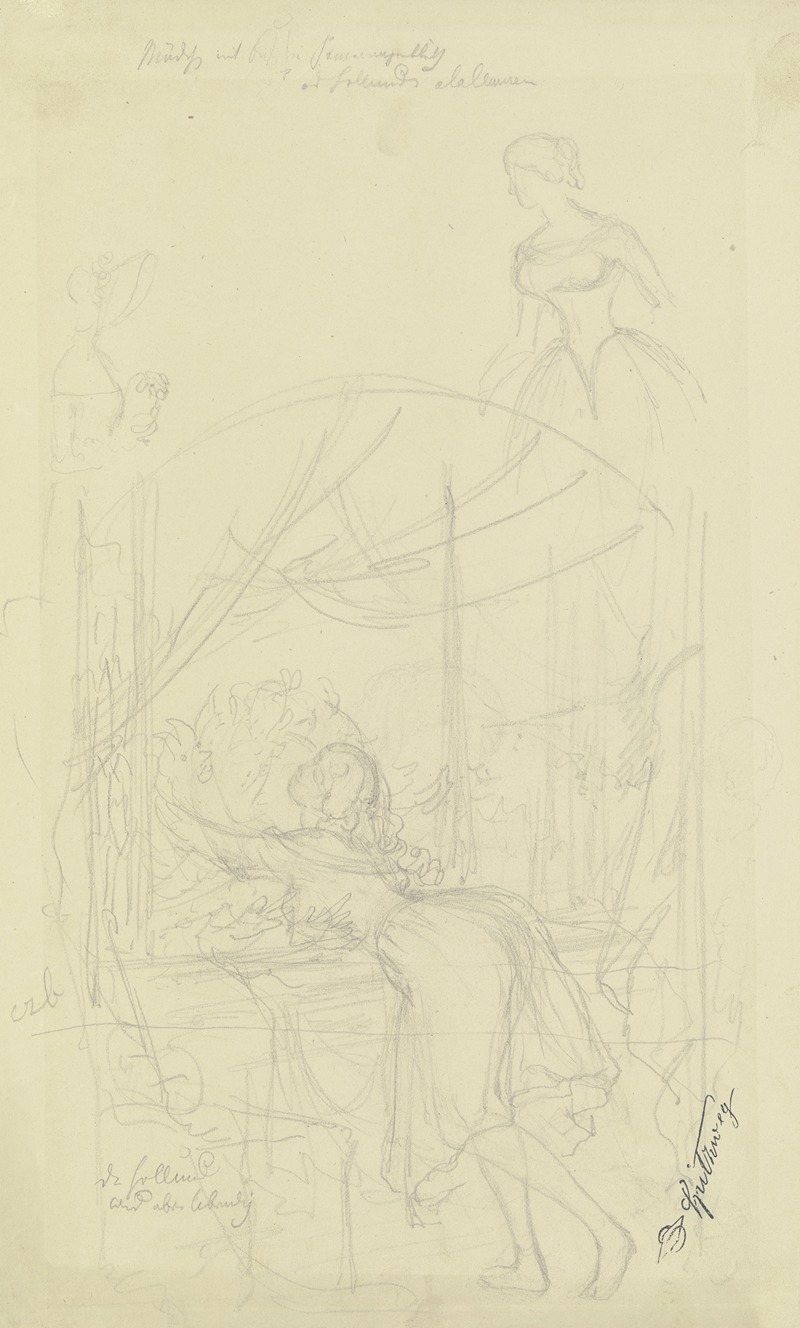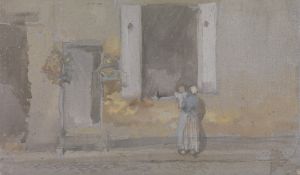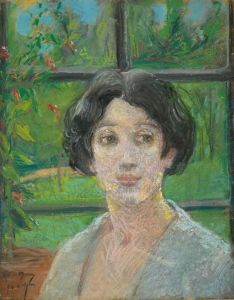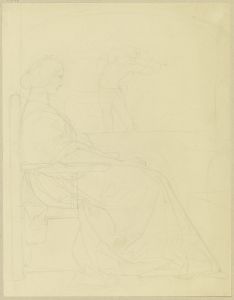
Mädchen am Fenster, einen Blumenstock umarmend, darüber Skizzen zweier Mädchen
A hand-painted replica of Carl Spitzweg’s masterpiece Mädchen am Fenster, einen Blumenstock umarmend, darüber Skizzen zweier Mädchen, meticulously crafted by professional artists to capture the true essence of the original. Each piece is created with museum-quality canvas and rare mineral pigments, carefully painted by experienced artists with delicate brushstrokes and rich, layered colors to perfectly recreate the texture of the original artwork. Unlike machine-printed reproductions, this hand-painted version brings the painting to life, infused with the artist’s emotions and skill in every stroke. Whether for personal collection or home decoration, it instantly elevates the artistic atmosphere of any space.
Carl Spitzweg's painting Mädchen am Fenster, einen Blumenstock umarmend, darüber Skizzen zweier Mädchen (translated as Girl at the Window, Embracing a Flowerpot, with Sketches of Two Girls Above) is a work by the renowned 19th-century German painter and poet Carl Spitzweg. Spitzweg is widely celebrated for his contributions to the Biedermeier period, a cultural movement that emphasized intimate, domestic, and often sentimental scenes of middle-class life.
This particular painting reflects Spitzweg's characteristic style, which often combines a sense of warmth, humor, and a focus on everyday life. The composition features a young girl standing by a window, tenderly embracing a flowerpot. Above her, there are sketches or faint depictions of two other girls, adding a layered narrative to the artwork. The scene captures a moment of quiet intimacy and contemplation, a hallmark of Spitzweg's work.
Spitzweg's attention to detail and his ability to convey emotion through subtle gestures and expressions are evident in this piece. The inclusion of the flowerpot, a recurring motif in Spitzweg's paintings, may symbolize growth, care, or domesticity, themes that align with the Biedermeier aesthetic. The setting by the window suggests a connection between the interior world of the subject and the exterior world beyond, a common element in Spitzweg's art.
The painting is executed in oil on canvas, a medium Spitzweg frequently employed. His technique often involved delicate brushwork and a soft color palette, which contributed to the gentle and inviting atmosphere of his scenes. While the exact date of this painting is not definitively documented, it is consistent with Spitzweg's broader body of work, which spans the mid-19th century.
Carl Spitzweg (1808–1885) was a self-taught artist who initially trained as a pharmacist before dedicating himself to painting. His works often reflect his keen observation of human behavior and his ability to find beauty in the mundane. Today, Spitzweg is regarded as one of the most important artists of the Biedermeier period, and his paintings are held in high esteem for their charm and insight into 19th-century bourgeois life.
Unfortunately, specific details about the provenance, current location, or exhibition history of Mädchen am Fenster, einen Blumenstock umarmend, darüber Skizzen zweier Mädchen are not readily available in public records. However, it remains an example of Spitzweg's ability to capture the essence of his time through intimate and evocative imagery.

















